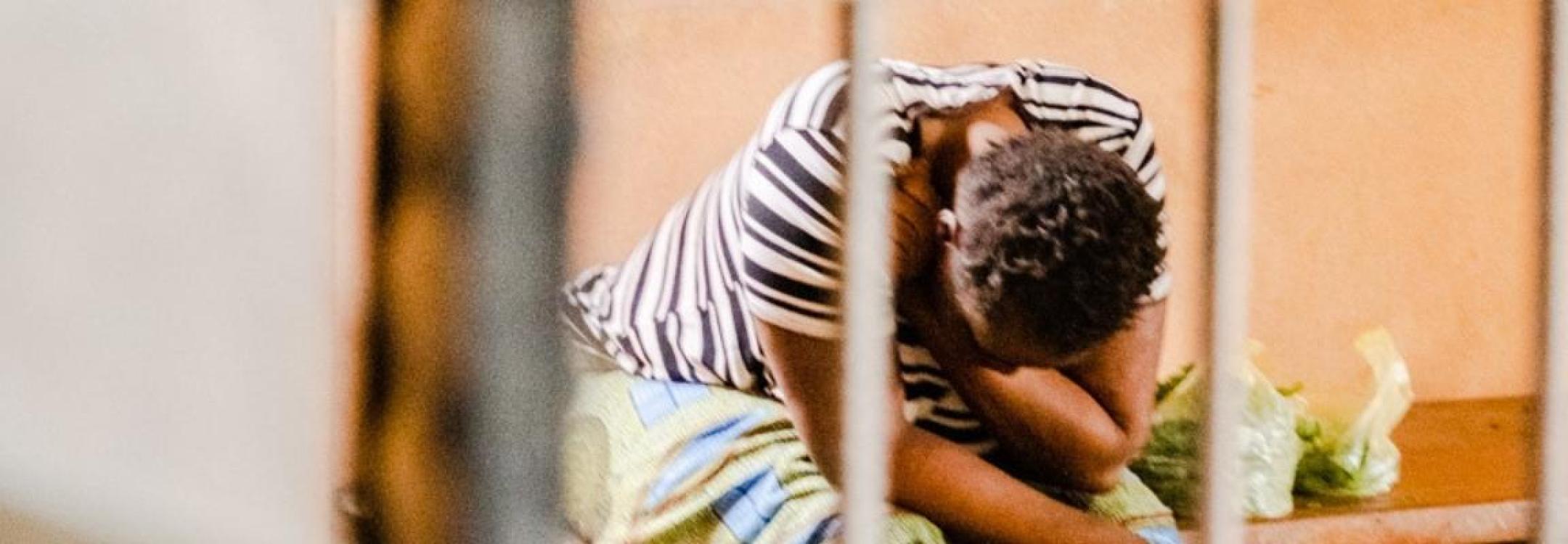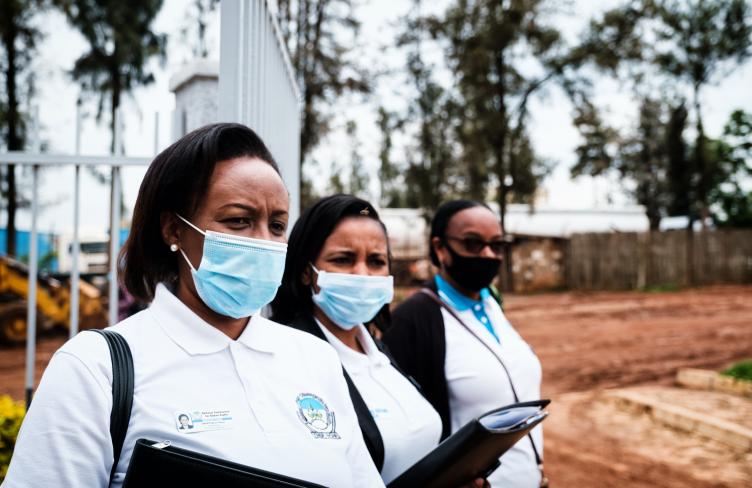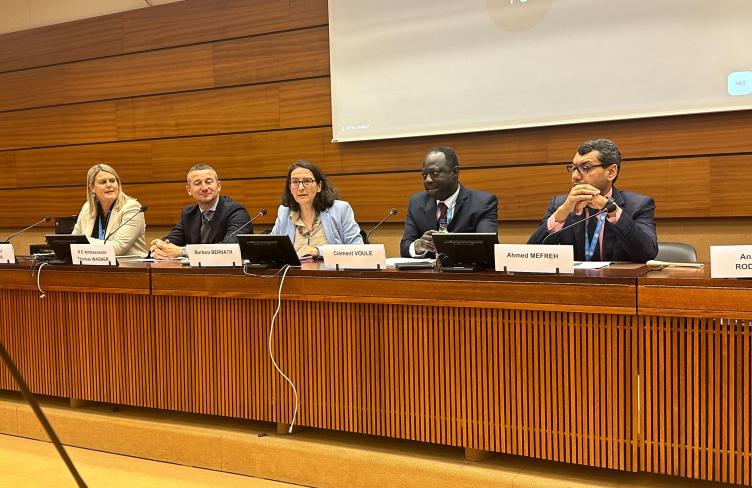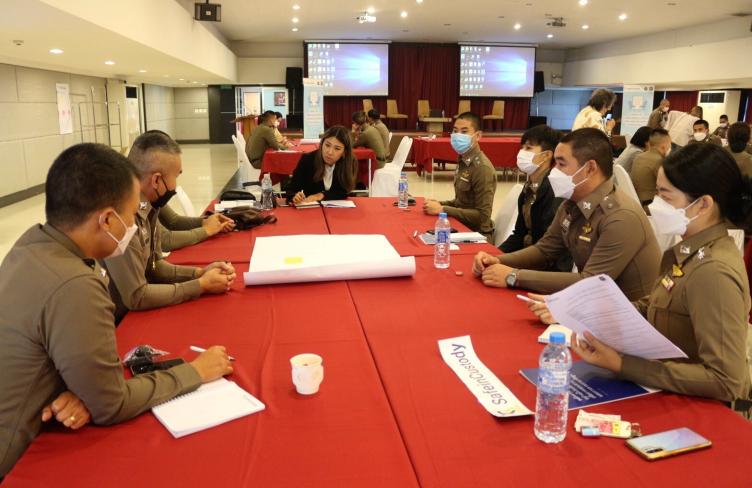
“It is very humiliating”, Adila, a woman detainee told me a few days ago when complaining about the strip search she had to undergo every time she was visited by her family and every time she was escorted by prison guards to the hospital outside the prison.
The humiliation experienced by Adila is not an isolated case. Every day, women across different countries and regions experience body searches while in prison. This practice can be humiliating to the extent that women may prefer not to receive visits to avoid being strip searched. Body searches can also affect women visiting their loved ones in prison.
A matter of dignity or security?
Questioning detention practices is at the core of monitoring the treatment and conditions of persons deprived of liberty. A simple question such as “why does it happen?” can be a powerful tool to prevent human rights violations from occurring.
Questioning the way body searches are conducted in practice is a clear example of that. When asking prison management and staff why body searches are conducted at certain times and in a certain way, oversight bodies will always hear that it is a matter of security. But can security concerns always justify the implementation of body searches? The short answer is no. Ensuring security in prison cannot be a justification for conducting practices that violate human dignity and other fundamental rights.
Security is a real and legitimate concern and states have an unavoidable duty to guarantee good order and internal security in places of deprivation of liberty. In this regard, body searches may be necessary and legitimate means to prevent detainees from having access to dangerous or prohibited items or substances, which may threaten the safety of staff, other persons deprived of liberty and visitors.
At the same time, when depriving a person of their liberty, states have the duty to guarantee the enjoyment of all those fundamental rights that are not restricted by the deprivation of liberty. The right to dignity is inherent to all human beings and it is one of the fundamental rights that states must ensure at all times, including in the context of deprivation of liberty. As reaffirmed by the Nelson Mandela Rules, “all prisoners shall be treated with the respect due to their inherent dignity and value as human beings” (Rule 1).
While sometimes necessary for security reasons, certain detention practices entail a high risk of discrimination, abuse and ill-treatment, by their nature but also for the manner in which they are implemented.
Body searches are among those risky practices. They can take different forms, including pat-down when the person being searched remains dressed, strip searches involving nudity but without physical contact, and invasive or body cavity searches involving a physical examination of body orifices.
Body searches are situations when abuse is possible, as they can involve nudity and physical contact, circumstances that increase the risk of humiliation and abuse. Due to their intrusive nature and the infringement of a person’s privacy, body searches can be particularly traumatic for women detainees, but also women visitors.
This is exacerbated in case of women who have experienced sexual violence or other kinds of trauma. Moreover, the intersection between gender and other factors, such as sexual orientation, gender identity and expression, religion, ethnicity and race, can expose certain women detainees to a greater risk of discrimination, abuse and violence during body searches.
Humiliating searches, in particular strip and cavity searches, may even amount to torture or ill-treatment, when conducted on discriminatory grounds and when leading to severe - physical or mental - pain or suffering.
A specific set of international standards
The use of body searches must respect the absolute prohibition of torture and other cruel, inhuman or degrading treatment or punishment under international law, that is not only enshrined in many treaties but also recognized as a norm of customary law.
Taking into account the inherent risk posed by the use of body searches, a number of international and regional human rights standards have included specific provisions relating to body searches of persons deprived of liberty. The 2010 Bangkok Rules, in particular, provide for the specific protection of women deprived of liberty, including in relation to body searches, complementing the provisions set out in the 2015 Nelson Mandela Rules.
Both the Nelson Mandela Rules (Rule 50) and the Bangkok Rules (Rule 19) specify that the respect for the dignity of the person being searched is the foremost priority when conducting body searches in places of detention. International (Nelson Mandela Rule 50) and regional standards such as the Principles and Best Practices on the Protection of Persons Deprived of Liberty in the Americas and the European Prison Rules also establish that body searches can be legitimate only if they follow the principles of legality, necessity and proportionality. This means that body searches should not be applied systematically as a blanket measure to all detainees, but should respond to specific identified risks. In addition, most progressive standards have also included the prohibition of cavity searches for their invasive nature.
Furthermore, international and regional standards have also defined the modalities in which body searches should be carried out to mitigate the inherent risks they entail. In this regard, Bangkok Rules 19-21 establish that body searches of women shall be conducted only by adequately trained women staff. It is also very important that body searches are conducted under appropriate sanitary conditions and that they are properly recorded, including the reasons for the searches and the identities of the person searched and the persons conducting the search (Nelson Mandela Rule 51).
Recognising the harmful psychological and physical impact of body searches, other alternative methods of inspection, such as scans, should be privileged to replace strip and invasive searches of women (Bangkok Rule 20). Where body searches are unavoidable, these should be carried out in two steps (first from the waist up, and then from the waist down) to avoid the person being completely naked.
How to monitor body searches in practice?
Oversight bodies play a crucial role in monitoring body searches of women in prison. To support their work, the APT has developed a number of tools, including the recently published analysis piece “Women in detention: Body searches. Improving protection in situations of vulnerability” and the Detention Focus Database.
To effectively monitor body searches, oversight bodies need to check if body searches are clearly regulated in national laws, policies, regulations and procedures, and if they comply with the most progressive international standards. Whenever needed, oversight bodies should propose changes and amendments to existing laws and policies to ensure they are in conformity with international standards.
Even more importantly, oversight bodies are uniquely placed to monitor how body searches are conducted in practice. Even if laws and policies on body searches comply with international standards, their implementation may be problematic. It is therefore crucial that the information collected by oversight bodies is verified through different sources, a process known as “triangulation”.
For instance, prison regulations may clearly define the reasons for and modalities of body searches of women in prison, in compliance with international and regional standards. However, prison staff may not be aware of such regulations and/or not follow them carefully. Strip searches may be used systematically to all women detainees, as a blanket policy, without an individual assessment, or used disproportionally with certain women on discriminatory grounds.
The only way to get accurate information is to check existing laws and policies, check detention registers, check training curricula, interview women deprived of liberty and visitors in private, interview staff, directly observe the place where body searches are conducted, and check first-hand the availability and functioning of alternative methods for body searches, e.g. scans and X-rays.
By doing so, oversight bodies can check whether strip and invasive searches are used as a last resort and when strictly necessary. Relying on different sources, in particular interviews with women deprived of liberty and women visitors, is key to understand the modalities of body searches and their impact on women detainees and visitors.
Again, it is about asking the “why”, questioning the reasons why body searches are used. It is also about the “how”, questioning the modalities in which body searches are conducted in practice. Based on their accurate findings, oversight bodies can make recommendations and contribute to changing laws, policies and practices.
This article was first published in the ICPA Newsletter - Issue 9.



